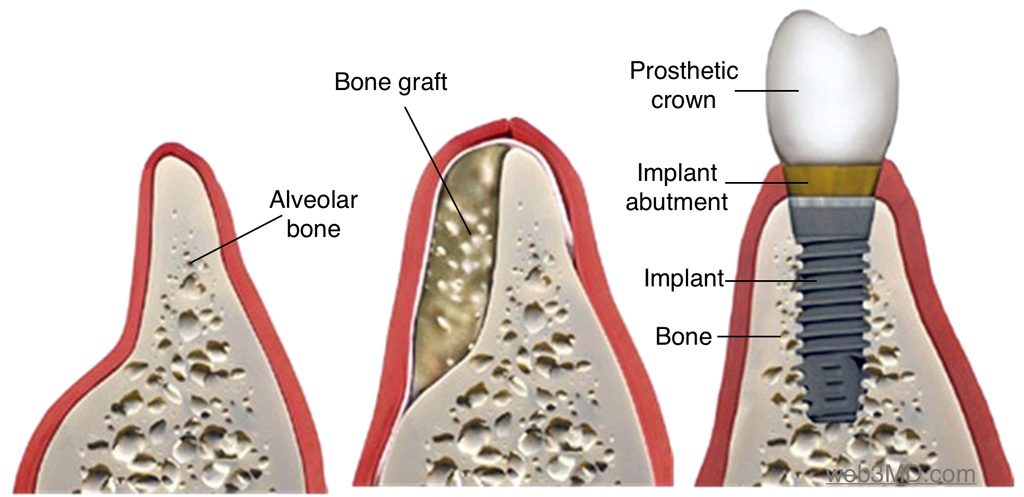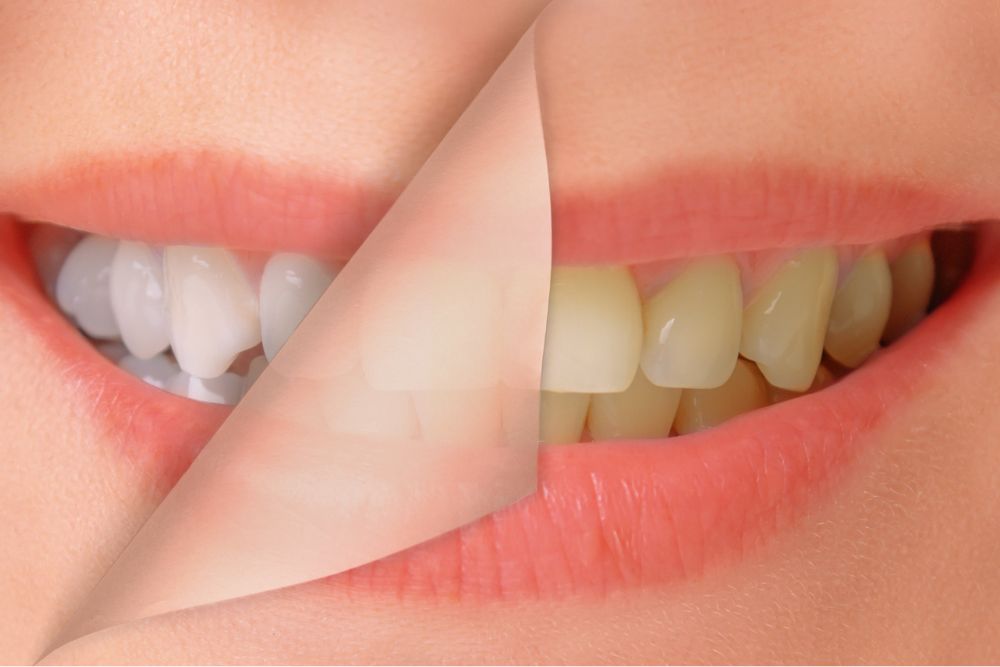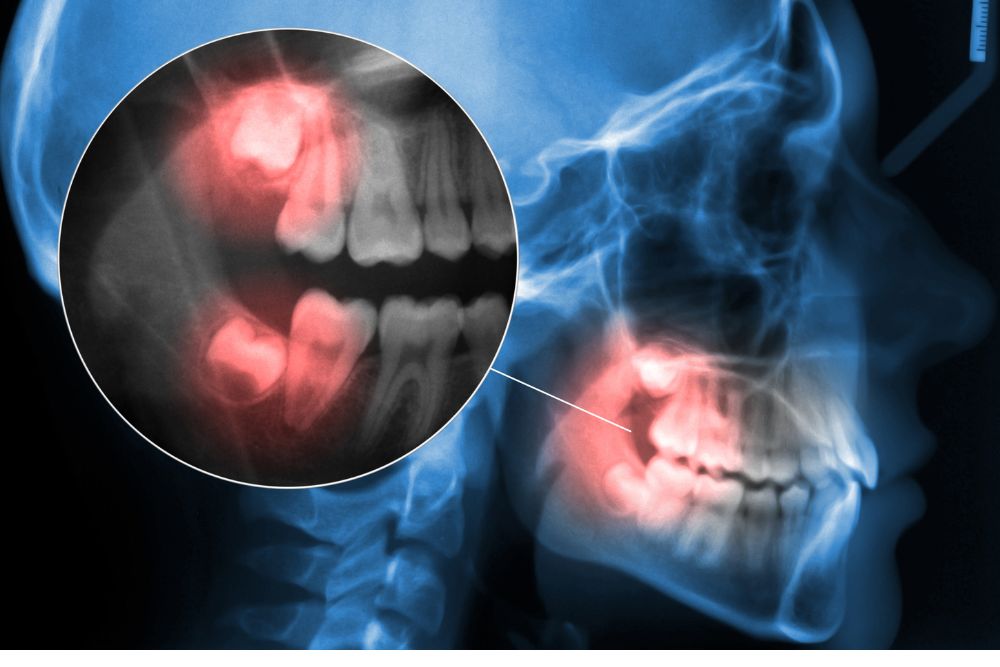Bone grafting may be necessary for dental implants when there is insufficient bone density in the jaw to support the implant. This procedure helps to augment the volume and density of the jawbone, providing a stable foundation for successful implant placement. By strengthening the surrounding bone, bone grafting enhances the long-term stability and success of dental implants.
What is Bone Grafting
Bone grafting is a dental procedure designed to enhance the volume and density of the jawbone. Jawbone deterioration can occur for various reasons, such as tooth extraction, gum disease, or injury. It is often employed to mitigate the loss of hard and soft tissues following tooth extraction, thus providing stability to the jawbone and improving eligibility for dental implant placement.
The need for bone grafting arises when the bone surrounding the missing tooth becomes weakened. Strengthening this compromised area is essential to provide adequate support for dental implants, remaining teeth, and surrounding tissues. Insufficient bone density may impede dental implant surgery or result in implant failure.
During the bone grafting procedure, bone material is added to the area of bone loss. This can be achieved by harvesting bone from another part of the patient’s body (autograft), utilizing bone from a human tissue bank (allograft), or employing bone from an animal tissue bank (xenograft). Subsequently, the body’s natural healing process facilitates the integration of the grafted bone with the existing bone, establishing a sturdy foundation for future dental procedures like dental implant placement.
Bone grafting for dental implants
Bone grafting plays a pivotal role in dental implant procedures by establishing a robust foundation that ensures adequate support for the implant. This stability is essential for the implant to seamlessly integrate with the jawbone, fostering long-term success. Additionally, bone grafts contribute to the restoration of a natural-looking gum line and facial structure, elevating both the aesthetic appeal and functional efficiency of the dental implant.
While not all dental implant patients necessitate bone grafts, if recommended by Ararat Dentral and your care team, they ensure your jawbone can effectively support your implants for a lifetime of radiant smiles. In essence, bone grafting addresses the challenges posed by insufficient bone volume, laying the groundwork for successful dental implants. Although this process may extend the overall treatment timeline, the benefits in terms of stability, aesthetics, and functionality make it a worthwhile investment in your oral health journey. Consultation with Ararat Dental will ascertain the most suitable approach tailored to your specific needs, guaranteeing a sturdy foundation for your smile. Reach out today to schedule an appointment and embark on your path to a confident, healthy smile.
What are the different types of bone grafts?
Autograft Bone Graft
At our clinic, we offer Autograft Bone Graft procedures, where our skilled doctors harvest bone from the patient’s own body, usually from the chin or hard palate. In cases where there isn’t enough bone tissue available from these areas, alternative sources like the hip or shin may be considered. The advantage of an autograft lies in its low risk of bone graft rejection, given that the bone originates from the patient’s own body. However, this procedure entails creating an incision in another area of the body, a consideration our doctors carefully discuss with each patient.
Allograft Bone Graft
In our practice, we offer Allograft Bone Graft procedures, where bone grafts are sourced from deceased donors. Prior to placement, our doctors ensure that the donor bone is free from any diseases or infections through rigorous screening processes. Additionally, the donor bone undergoes extensive treatments to ensure compatibility with our patients in Pasadena. While Allograft Bone Grafts offer a viable solution for dental implants, the primary concern revolves around the potential risk of immune reactions or rejection, a factor our team carefully considers and discusses with each patient.

Xenograft Bone Graft
At our clinic, Xenograft Bone Graft procedures are occasionally selected by our doctors or patients in readiness for dental implants. This method involves obtaining bone graft material from an animal source, typically a cow or pig, which is then processed to primarily consist of mineral components. Xenografts provide excellent support to the dental implant site, and as the mouth and jaw undergo healing, the body gradually replaces the xenograft material with new bone tissue. This innovative approach ensures optimal bone regeneration and integration, promoting long-term success for dental implant procedures.
Alloplast Bone Graft
For individuals in Jersey City gearing up for dental implant procedures, another alternative to consider is the Alloplast Bone Graft. This type of graft is crafted either from synthetic materials or derived from natural sources like minerals. Alloplasts offer several advantages, including the absence of disease or infection risk associated with the graft material and the facilitation of accelerated bone formation, promoting swift healing and integration.
Trust Ararat Dental
The idea of undergoing dental implant placement can be intimidating, especially when considering the potential need for a bone graft. However, rest assured that the process is highly beneficial. Strengthening your jawbone to ensure it can effectively support and retain your dental implants is fundamental to the success of the procedure. Trust us, investing in this process is crucial for achieving lasting and effective results with your dental implants.







